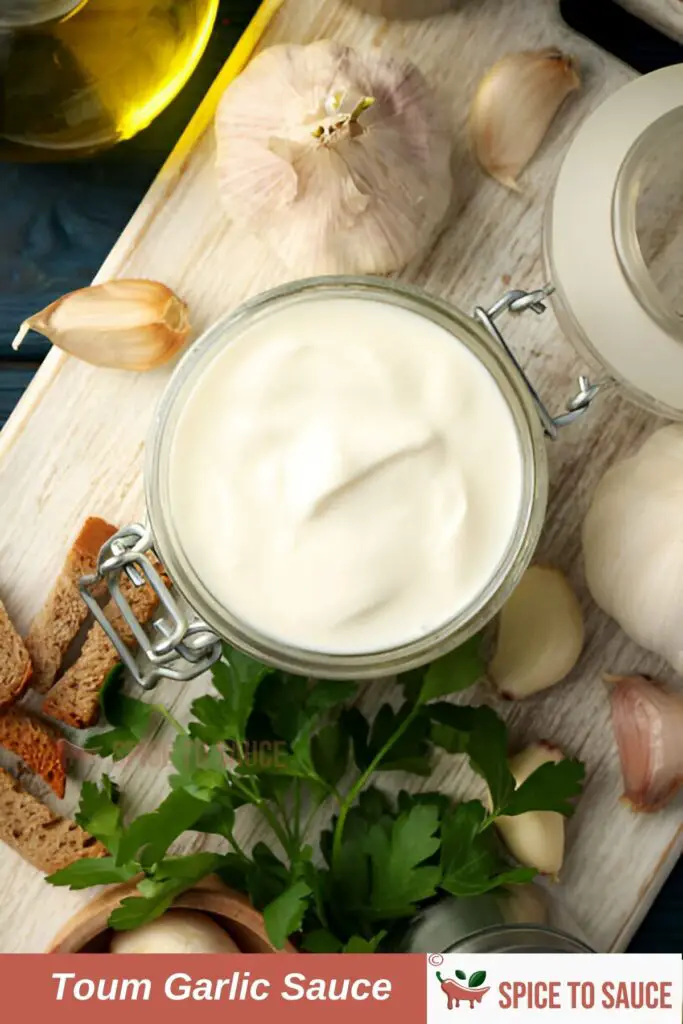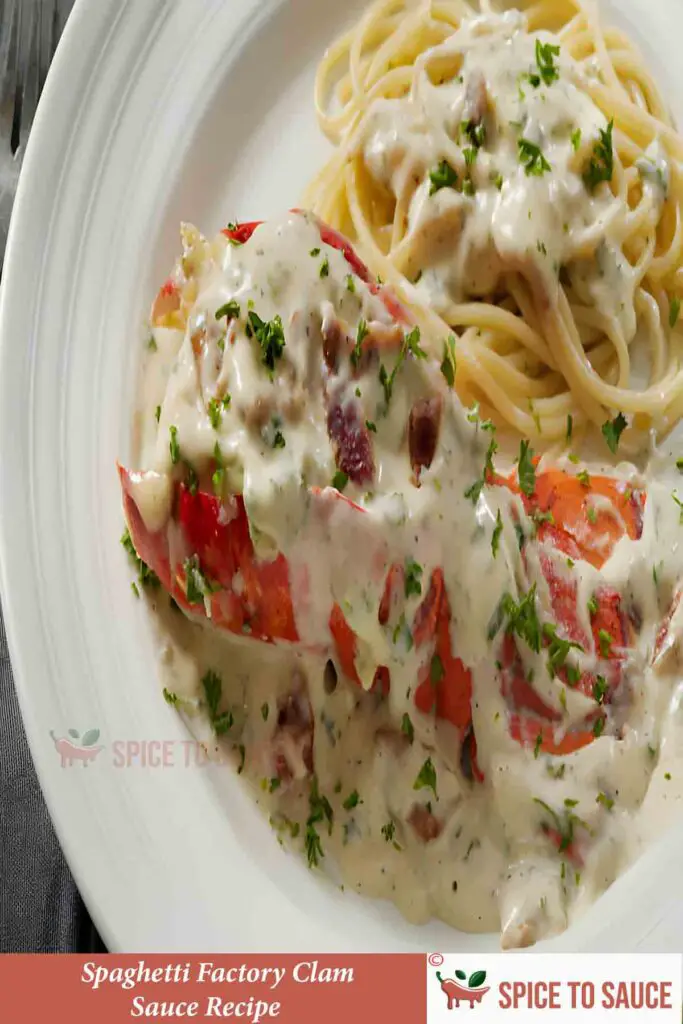If you’re a fan of Middle Eastern cuisine or just love garlic, you’ve probably heard of Toum. This creamy, garlicky condiment is a staple in Lebanese cuisine and adds a burst of flavor to dishes like shawarma, kebabs, and falafel.
Today, we’ll dive into the world of authentic homemade Toum. We’ll explore the traditional ingredients used to create this delicious sauce, as well as provide you with a step-by-step guide on how to make it yourself. Get ready to elevate your culinary skills and impress your taste buds with this irresistible recipe!

What is Toum?
Toum is a traditional Lebanese garlic sauce. It’s made from garlic, olive oil, lemon juice, and salt. The ingredients are blended into a creamy, thick consistency. It’s often served as a condiment with grilled meats, shawarma, or sandwiches. Toum has a strong, bold flavor due to the garlic, and it’s popular in Middle Eastern cuisine. It’s similar to mayonnaise but without eggs. The sauce is fresh, tangy, and adds a rich garlicky taste to dishes.
Ingredients of Toum Garlic Sauce
Toum, a popular Lebanese garlic sauce, is known for its creamy texture and bold flavor. It is made with just four simple ingredients:
Garlic Cloves 1 Cup
Garlic is a strong-flavored bulb used in cooking. It has a pungent taste and aroma. In toum, garlic adds a bold, tangy kick. It also has health benefits, including boosting immunity and reducing inflammation.
Kosher Salt 1 Teaspoon
Kosher salt is a coarse, flaky salt used in cooking. It has a milder flavor than regular table salt. In toum, it helps balance the flavors and aids in the emulsification of the sauce.
Lemon Juice ¼ Cup
Lemon juice is the juice from fresh lemons. It adds a tangy, citrusy flavor to toum. The acidity helps balance the strong garlic taste and aids in creating a smooth, creamy texture in the sauce.
Vegetable Oil 2 Cups
Vegetable oil is a neutral-tasting oil used in cooking. In toum, it helps create a smooth, creamy texture. It also balances the strong flavors of garlic and lemon, allowing the sauce to emulsify properly.
How to Make Lebanese Garlic Sauce?
- Remove the skins off the garlic cloves and transfer them into a quart jar or a similarly sized container.
- Add the lemon juice and salt after that.
- Blend the mixture with an immersion blender until it takes on the consistency of a paste.
- After covering the mixture with all of the oil, place the immersion blender at the bottom.
- Start mixing without raising it.
- Gradually raise the blender as the mixture emulsifies until the whole mixture is white and fluffy.
- To improve the flavor, place a lid on the jar and place it in the refrigerator, ideally overnight.
Why Did My Toum Sauce Separate? (How To Fix It)
Toum sauce can separate if the ingredients aren’t emulsified properly. This usually happens if the oil is added too quickly or if the mixture is too cold. The garlic and oil need to blend together slowly to form a smooth, thick consistency.
To fix it, try these steps:
- Start by adding a small amount of water or lemon juice to the separated sauce.
- Whisk or blend the mixture again at a slow speed, adding the oil little by little.
- If it’s still separating, you can place the sauce in a blender and slowly drizzle in more oil, just like making mayonnaise.
The key is patience and adding the oil gradually to allow the sauce to emulsify properly.
How to Make Toum Without A Food Processor?
You can make toum without a food processor by using a mortar and pestle or a hand whisk. Start by crushing garlic into a paste using the mortar and pestle. Slowly add a bit of salt, then slowly drizzle in oil while stirring continuously to create a smooth paste. If using a whisk, mash the garlic into a paste with a fork, then slowly add oil drop by drop, whisking constantly. Add lemon juice or water to help smooth the mixture. This method requires patience but will give you a creamy, homemade toum!
Is Toum Healthier Than Mayo-Based Garlic Sauce?
Yes, toum is generally healthier than mayo-based garlic sauce. Toum is made from garlic, olive oil, lemon juice, and salt, which are simple, natural ingredients. It contains no eggs or preservatives, unlike mayo-based sauces. The olive oil in toum provides healthy fats, and garlic has several health benefits. Mayo-based sauces, on the other hand, are often high in unhealthy fats and calories due to the egg and oil content. So, toum is a lighter, healthier option for those looking to avoid processed ingredients.
How Long Does Homemade Toum Last In The Fridge?
Homemade toum can last up to 1-2 weeks in the fridge. To keep it fresh, store it in an airtight container. The sauce should be kept chilled at all times. Make sure to check for any signs of separation or spoilage before using it. If toum starts to smell off or change color, it’s best to discard it. For longer storage, you can freeze toum in small portions, and it can last for about 2-3 months in the freezer. Just be sure to stir it well after thawing.

Toum Garlic Sauce
Ingredients
- 1 Cup Garlic Cloves
- 1 Teaspoon Kosher Salt
- ¼ Cup Lemon Juice
- 2 Cups Vegetable Oil
Instructions
- Remove the skins off the garlic cloves and transfer them into a quart jar or a similarly sized container
- Add the lemon juice and salt after that
- Blend the mixture with an immersion blender until it takes on the consistency of a paste
- After covering the mixture with all of the oil, place the immersion blender at the bottom
- Start mixing without raising it
- Gradually raise the blender as the mixture emulsifies until the whole mixture is white and fluffy
- To improve the flavor, place a lid on the jar and place it in the refrigerator, ideally overnight
Nutrition
Final Words
With this authentic homemade toum recipe, savor the rich flavors of Lebanon. Elevate your meals with the creamy, garlicky richness of this classic sauce that will bring your taste senses to the streets of Beirut. Learning this recipe will give your food a more genuine feel, regardless of your level of experience as a chef or your passion for cooking. Get ready to surprise your palette and guests with this delectable delicacy straight from the heart of Lebanese cuisine.




